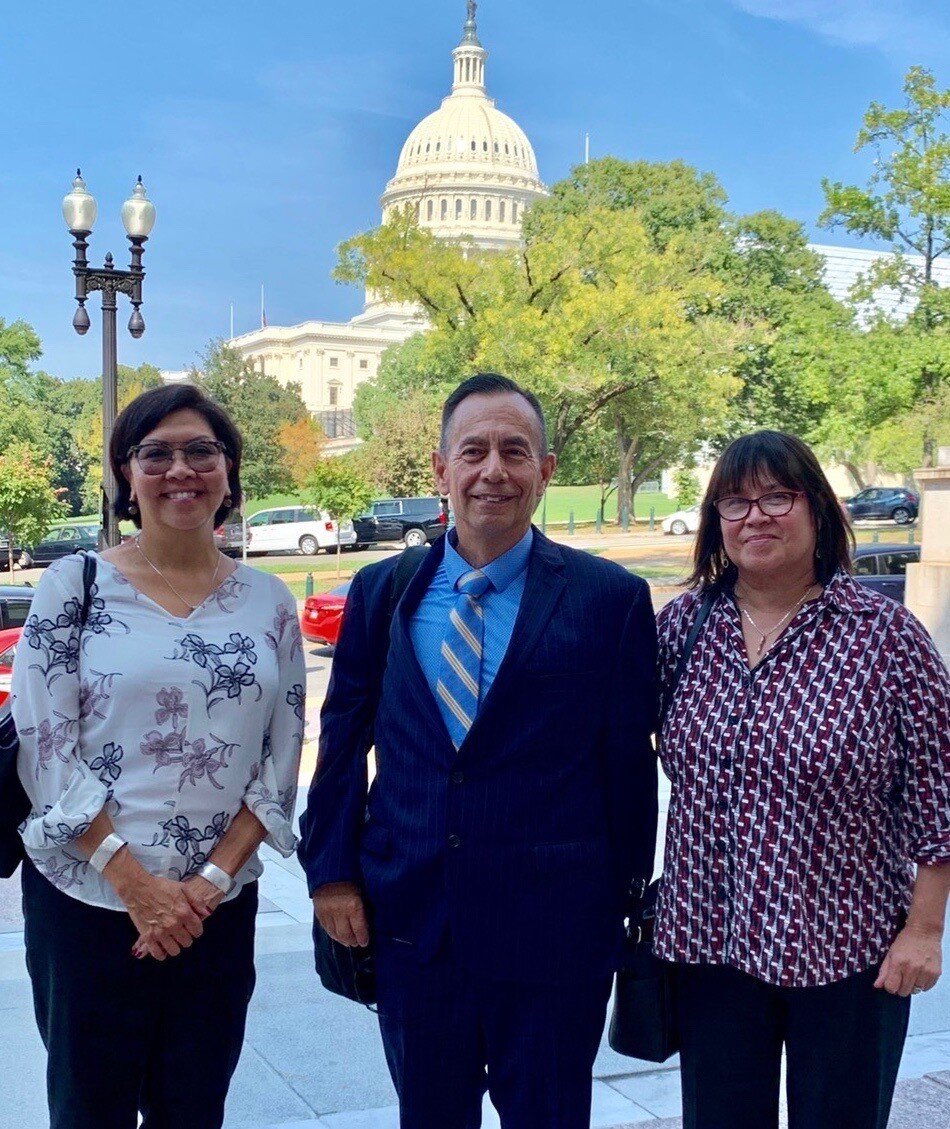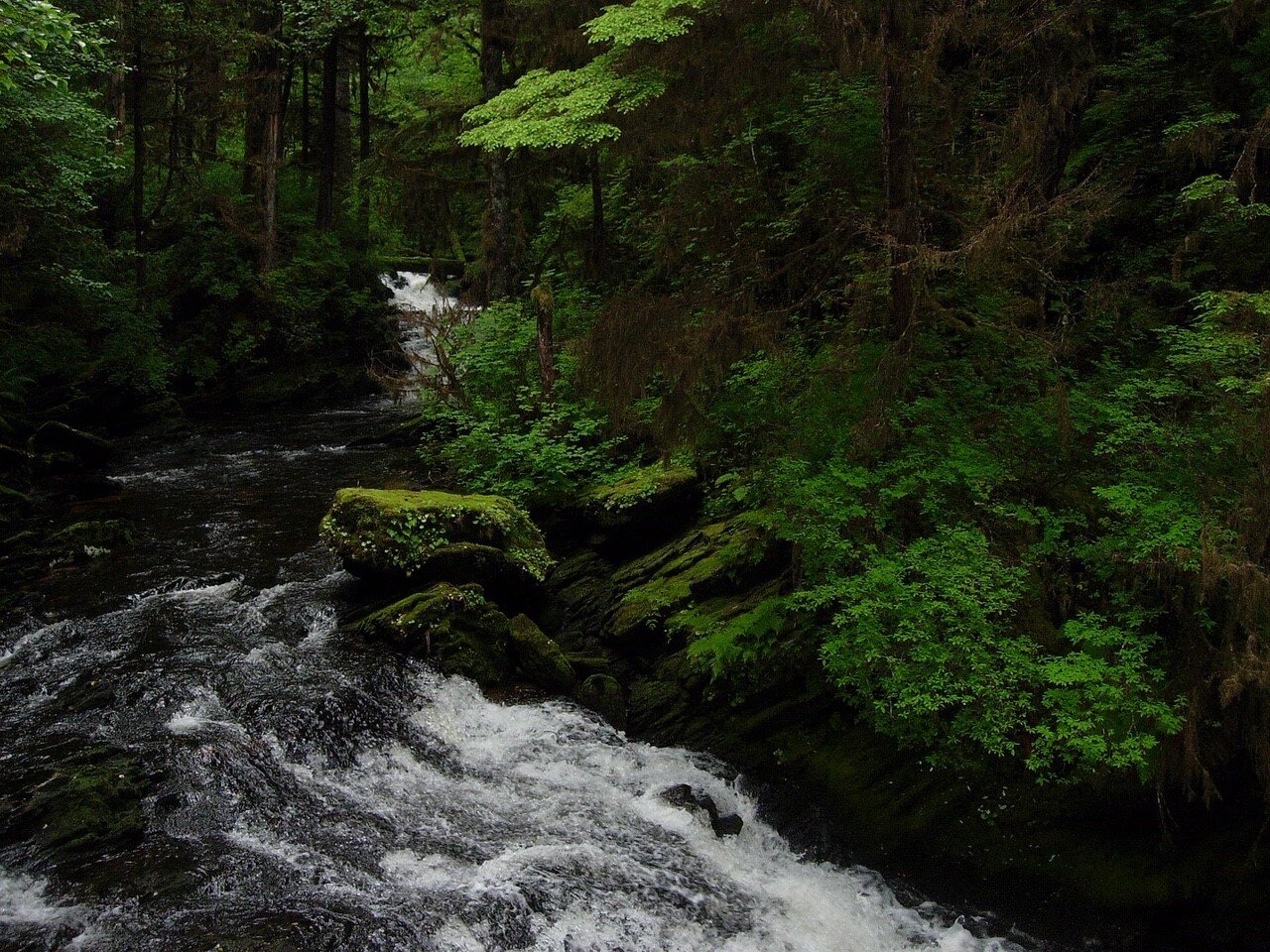Alaska Native landless villages suffer gridlock due to legacy of clear cutting by Frank Hopper
Five Alaska Native communities who were inexplicably left out of the original 1971 Alaska Native Claims Settlement Act (ANCSA), are preparing to petition Congress, once again, to receive the land they say they should have received 48 years ago. This will be their fifth try.
Richard Rinehart, a spokesperson and lobbyist for the landless communities, is a board member of the Alaska Native regional corporation Sealaska and CEO of the Tlingit and Haida Business Corporation. In a recent interview, he talked about how this attempt will differ from the previous ones.
“I think the thing to get across is that we’re looking to do it somewhat differently. We’re also looking to be very transparent,” Rinehart explained.
The five so-called “landless” communities are in the panhandle of Alaska starting with Haines in the north, then Tenakee Springs, then Petersburg, Wrangell and Ketchikan at the southern end. No one knows why these communities were left out of the original settlement.
Alaska Native residents of the five communities have been seeking redress of the unexplained oversight for decades. Four separate bills have been introduced in Congress. Each would have extended ANCSA to include them, authorizing the communities to form Alaska Native Village corporations and transferring 23,040 acres of land in the Tongass National Forest to each. The total transfer of rainforest land to the new corporations would equal 115,200 acres.
But none of these bills were ever enacted. They all died in Congress. If the original exclusion of the villages was merely a bureaucratic oversight, the landless communities are collectively asking, why has there been such a long holdup in correcting it?
The Alaska Chainsaw Massacre
A 1992 Forest Service report states over 3 billion board feet of timber was harvested from the Tongass National Forest by Alaska Native corporations from 1980 to 1989. That’s approximately 200,000 acres of old-growth forest that was mowed down and shipped as logs to foreign markets, mainly Japan. Shareholder Facebook groups often refer to the 1980s period of clear cutting as “The Alaska Chainsaw Massacre.”
Few shareholders knew about the clear cutting at the time and made little outcry. Environmental protection groups such as the Southeast Alaska Conservation Council and Trout Unlimited, however, have spoken out. These groups are one of the main lobbying forces behind the holdup of returning land to the five landless communities.
It goes deeper than clear cutting
Meredith Trainor, Executive Director of Southeast Alaska Conservation Council (SEACC), says her organization’s opposition to the previous landless bills had less to do with clear cutting and more to do with the limiting nature of the original settlement, ANCSA, which forces a corporate model on Native communities.
“The way ANCSA was structured, it pushed village corporations and regional corporations and urban corporations into a corporate model with shareholders and a requirement to generate relatively prompt returns for the shareholders,” she explained.
Board members of Native corporations are typically elected due to their perceived ability to produce regular dividends. The cultural and social service needs of the community are considered secondary to the need to produce revenue. Trainor believes this is a fault of using a corporation as a quasi-form of government.
She feels setting up a private, for-profit corporation as the recipient of a village’s ANCSA funds and land places limits on that community's ability to govern itself. Corporate decisions and business deals are often made behind a cloak of corporate proprietary information and not made known to shareholders.
“We think the landless communities deserve something better than ANCSA, that’s better at finding a resolution that gives them more agency and ability to set a path forward,” Trainor said.
That was then, this is now
When asked about the possibility of clear cutting by the new corporations, Rinehart pointed to the current timber market, which is much less lucrative than it was in the late 1980s.
He says other revenue generators such as tourism and the sale of carbon credits through carbon sequestration are under consideration. Sealaska currently has 165,000 acres of their land set aside for carbon credit sales, according to Rinehart. He acknowledges the mistakes made by Alaska Native corporations during the clear cutting era.
“The truth was, the tribes or corporations in the past, had no way to capitalize themselves and they rushed into clear cutting. Some of them maybe rushed a little too fast and they could have done it better, but it’s not the only way to go,” he said.
At present, no new bills for the landless are before Congress, although Rinehart says new legislation is currently being developed and will be introduced soon.
Trainor says her organization, SEACC, has no official position until they get a chance to look at the new legislation. She emphasizes they do not support extending ANCSA to include the landless communities.
“We have been very clear with our partners in the Indigenous and landless communities that we can’t support a simple extension of ANCSA,” she said.
The specter of clear cutting remains
Critics point out Sealaska Timber Company, a wholly-owned subsidiary of Sealaska, continues to carry out clear cutting in the Tongass for both Sealaska and as a subcontractor for village and urban Native corporations.
A 115,200 acre increase in available, harvestable old-growth timberland could be quite lucrative for them. Shipfulls of logs regularly travel from Alaska to Japan, China and Korea, although at a rate much lower than in the past. Rinehart himself says the possibility of clear cutting by the new corporations still exists.
“You can’t take logging off the table or carbon credits don’t work, because you have to agree to not log and you have to have had the ability to log,” he said.
Rinehart points out other village and urban Native corporations have provided scholarships, training and employment to Native shareholders. Many fund cultural centers that strengthen Native heritage. These and other programs are often paid for by village corporations.
However, it’s also important to remember with the Trump administration’s desire to open the Tongass to logging and remove it from the Clinton-era Roadless Rule protections, the specter of clear cutting looms ever larger over the country's largest National Forest, making the landless communities’ drive for redress increasingly difficult.
Frank Hopper is a Tlingit freelance writer, born in Juneau, Alaska, and raised in Seattle. He now lives in Tacoma.



